Before we go through the detailed brief regarding FAQs and facts about Morocco, Here is a quick look about Morocco.Morocco is a country located in North Africa, bordered by the Atlantic Ocean and the Mediterranean Sea to the west and north, respectively. It shares land borders with Algeria to the east and the disputed region of Western Sahara to the south.
The tourism sector contributes greatly to the Morocco economy, and the Moroccan state makes great efforts for the safety and comfort of tourists to support the flow of tourists.
Did you know that Morocco is UNESCO heritage site?
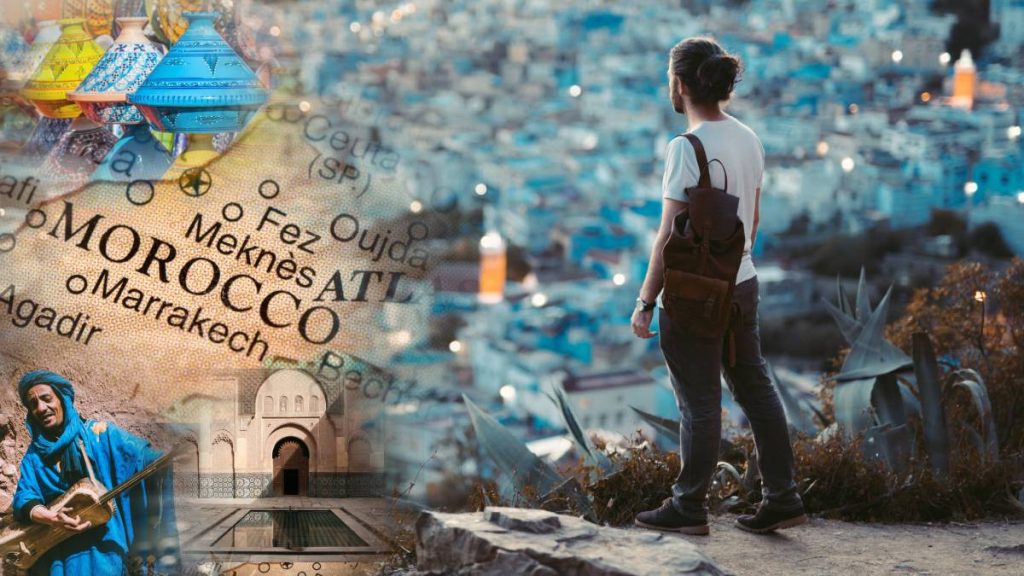
Morocco is home to several UNESCO World Heritage Sites due to its rich cultural, historical, and natural significance. UNESCO designates sites as World Heritage Sites based on criteria that demonstrate their outstanding universal value.
Here some specific sites which Makes Morocco so special: The Medina of Fez, Medina of Marrakech, Medina of Essaouira (formerly Mogador), Ksar of Ait-Ben-Haddou, Archaeological Site of Volubilis, Historic City of Meknes, Tinghir and the Todra Gorge.
Here are some important FAQs and Facts about Morocco:
Here is the Traditional Morocco Music Fact you might be interested to learn:
Morocco’s musical tapestry is a captivating blend of tradition and diversity, reflected in a symphony of unique instruments that have woven their melodies into the country’s cultural fabric. From the haunting tones of the Rhaita, reminiscent of spiritual echoes in Sufi music, to the celebratory beats of the Bendir, a circular percussion instrument echoing through lively Moroccan weddings, each musical piece tells a story deeply rooted in the nation’s history.
The Mijwiz, an ancient wind instrument with parallel bamboo pipes, showcases both the age-old techniques and the skilled artistry required for circular breathing.
Meanwhile, the Gimbri, akin to a mystical guitar, resonates with repetitive sounds that transport listeners into trance-like states. As the Qraqebs, small yet mighty hand cymbals, accompany other musicians in energetic percussive rhythms, the Tarija adds a visual spectacle with its hourglass shape adorned with vibrant patterns.
Morocco’s musical legacy extends to the Derbouka, a modernized goblet-shaped drum, and the Kamenjah, a unique Moroccan violin played in a distinct vertical style. The Sintir, a percussive bass guitar, and the Tar, a frame drum with metal cymbals, infuse social gatherings with rhythmic allure. Lastly, the Oud, a solemn guitar-like instrument, crowns the ensemble with its timeless presence in formal music settings.
In every beat, strum, and breath, Morocco’s music culture resonates as a harmonious celebration of heritage, bridging ancient traditions with contemporary rhythms.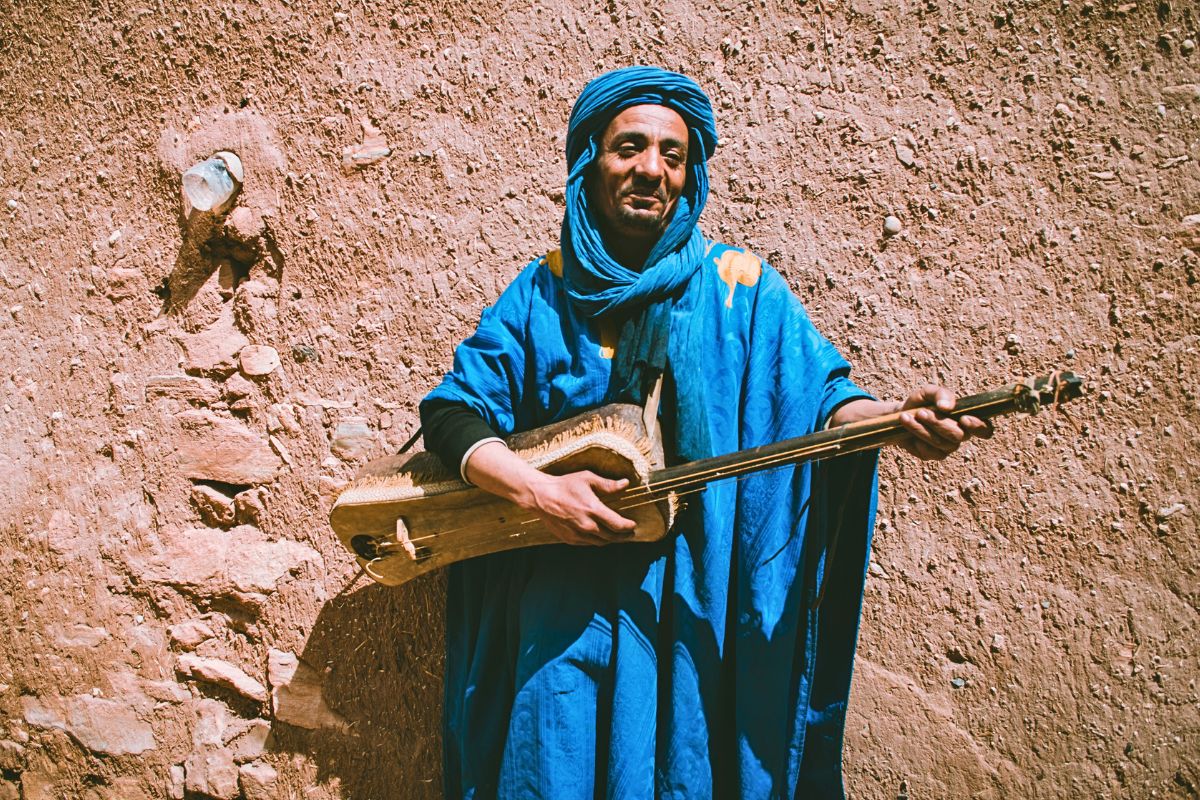
Delving into the realm of facts about Morocco People reveals a population of approximately 35.7 million individuals celebrated for their warm hospitality and friendliness. This diverse nation, with a rich cultural tapestry, warmly welcomes tourists, showcasing a harmonious coexistence that defines the Moroccan people.
Moroccans, ethnically divided into Arabs and Berbers, exemplify unity amidst diversity, presenting a noteworthy model of how individuals from different backgrounds, ideologies, religions, and cultures can peacefully coexist. The cherished tradition of hospitality runs deep in Moroccan values, passed down through generations and evident in the friendliness, generosity, and strong sense of coexistence experienced by tourists.
In the modern and progressive Islamic nation of Morocco, locals take pride in actively cultivating a positive reputation and continually working towards enhancing the welcoming atmosphere for visitors. Whether navigating the vibrant streets of cities or immersing themselves in the traditions of rural areas, tourists encounter the easy-going and open nature of the Moroccan people.
Essentially, Morocco serves as a beacon of hospitality, fostering a meaningful connection between locals and tourists that transcends cultural differences.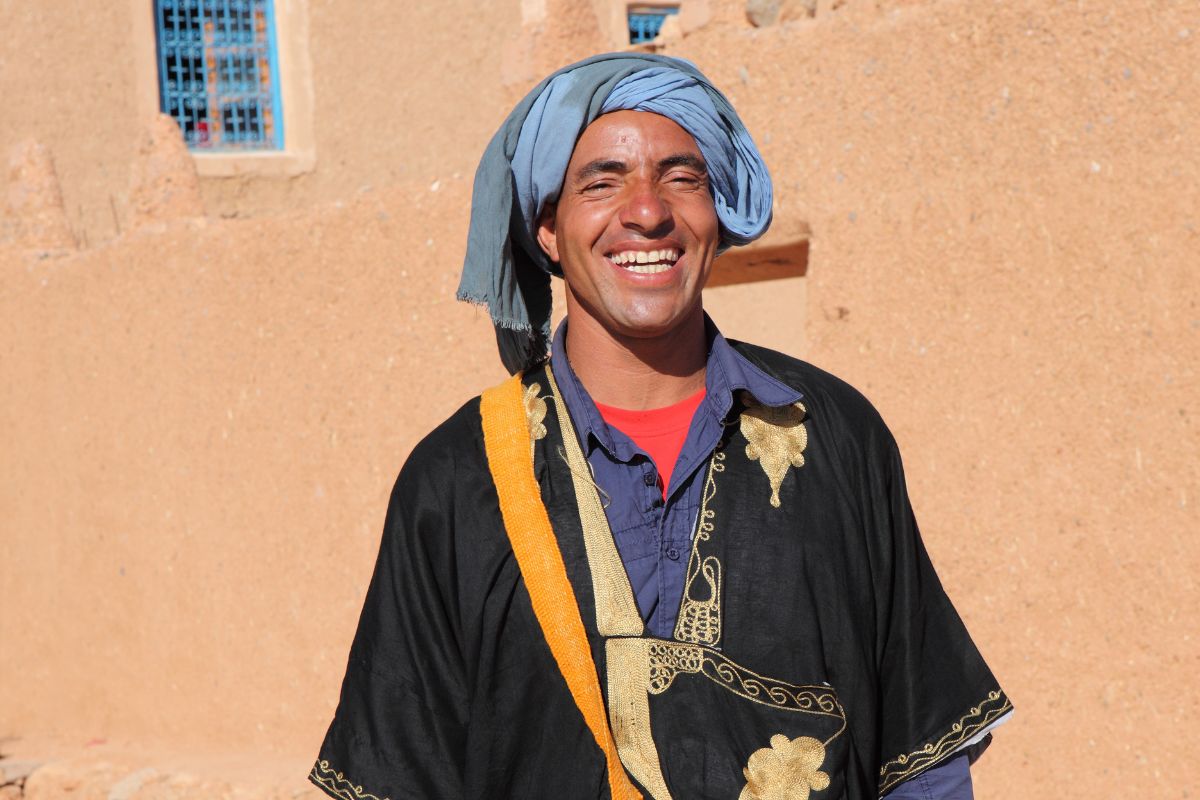
Morocco’s rich history unfolds as a mosaic of cultural, dynastic, and colonial influences. Ancient Berber tribes inhabited the region, leaving their mark on sites like Volubilis. The 7th-century Arab-Muslim expansion introduced Islam and established the Umayyad Caliphate’s rule. Subsequent Berber dynasties, including the Almoravids and Almohads, shaped Morocco’s identity.
During the 19th and early 20th centuries, European powers sought control, leading to the establishment of French and Spanish protectorates. Morocco regained independence in 1956, with Mohammed V as the first post-colonial king. The reign of King Hassan II in the late 20th century saw economic and social reforms, while territorial disputes over the Western Sahara persisted.
In 1999, King Mohammed VI ascended to the throne, emphasizing modernization and development. Morocco’s constitutional monarchy blends tradition with progress, evident in the preservation of UNESCO-recognized historic sites like Marrakech’s medina and Fes. The nation’s history mirrors resilience, evolving from ancient Berber roots through Islamic rule, colonial challenges, and into the vibrant cultural tapestry that defines contemporary Morocco.
The historical journey of Morocco mirrors a tale of resilience, evolving from its ancient Berber roots through the epochs of Islamic rule, colonial challenges, and emerging into the vibrant cultural landscape that characterizes contemporary Morocco. In essence, these facts about Morocco encapsulate a narrative that transcends time, illustrating a nation intricately connected to its past, yet steadfastly moving towards a future defined by progress and cultural richness.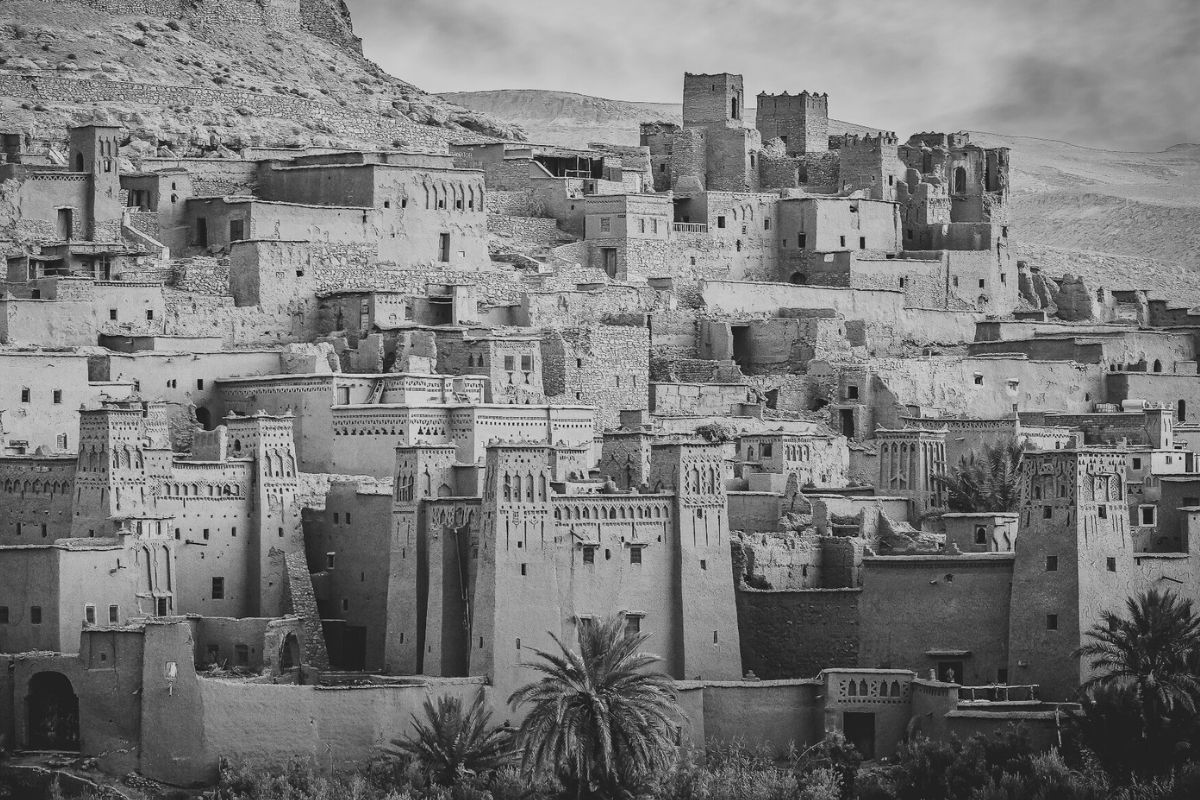
Exploring the culinary landscape of Morocco reveals intriguing facts about Moroccan food, which serves as a living testament to a rich cultural blend. The cuisine draws inspiration from Arab, Berber, and Mediterranean influences, resulting in a symphony of bold and diverse tastes.
Spices such as cumin, coriander, turmeric, and cinnamon take center stage, contributing to the unique flavor profile. Staple ingredients, including fresh herbs, olive oil, preserved lemons, olives, and various meats, play essential roles in shaping the distinctive Moroccan culinary experience.
At the core of Moroccan gastronomy lies the iconic Tagine, a slow-cooked stew named after the earthenware pot traditionally used for its preparation. Couscous, a light and fluffy grain, is a ubiquitous delight frequently paired with flavorful meat or vegetable stews. Mint tea, lovingly referred to as “Moroccan whiskey,” not only symbolizes hospitality but is also enjoyed throughout the day.
The street food scene in Morocco forms a vibrant tapestry of delights, offering a diverse range from savory grilled kebabs and falafel to sweet treats like Moroccan pancakes and pastries. Moroccan cuisine shares commonalities with Mediterranean cooking, placing emphasis on fresh vegetables, olive oil, and fragrant herbs.
One notable feature of Moroccan food is the harmonious combination of spicy and sweet flavors, exemplified by the traditional spice blend Ras el Hanout. Meals in Morocco transcend mere sustenance; they are a social affair, with communal dining bringing family and friends together to savor the diverse and flavorful offerings.
In conclusion, facts about Moroccan food unfold a delightful journey for food enthusiasts, showcasing vibrant spice blends, rich flavors, and unique combinations that mirror the country’s diverse cultural influences. From the communal joy of sharing a traditional tagine to the ritual of sipping aromatic mint tea, every bite encapsulates the essence of Morocco’s culinary heritage.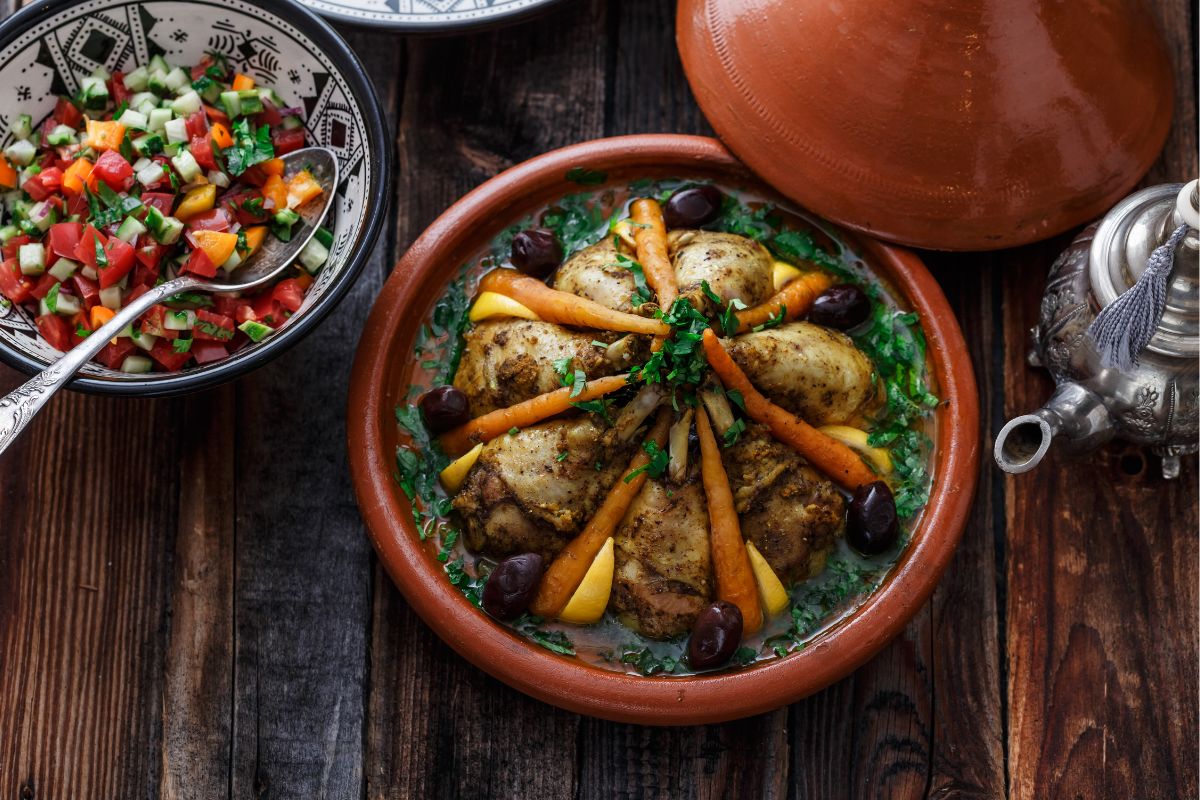
Morocco, a captivating blend of exotic allure and tranquility, emerges as a prime destination for filmmakers. Renowned for its diverse attractions and stunning locales, the country attracts top actors like Leonardo DiCaprio and Brad Pitt.
Boasting world-class safety and a low crime rate, Morocco ensures a secure environment for both visitors and film productions. Its scenic landscapes have lured acclaimed directors such as Martin Scorsese, Ridley Scott, and Paul Greengrass.
In recent years, Morocco has evolved into a filmmaking haven, drawing global attention for its gorgeous backdrops. A testament to its cinematic allure, Morocco welcomes both tourists and filmmakers with open arms.
Here are the list of Movies Filmed in Morocco with locations:
. Babel – Casablanca, Ait Benhaddou
. Jesus of Nazareth – Various locations in Morocco
. The Sheltering Sky – Various locations in Morocco
. Lawrence of Arabia – Aiit Benhaddou Kasbah
. Kundun – Various locations in Morocco
. Gladiator – Aiit Benhaddou Kasbah
. Sex and the City 2 – Erg Chebbi Dunes, Marrakech, Djemma El Fna square, Amanjena Hotel
. Othello – Various locations in Morocco
. The Man Who Knew Too Much – Casablanca, Marrakech
. Marrakech Express – Morocco (Various locations)
. The Mummy – Sahara Desert
. Black Hawk Down – Filmed in 2002, locations based on the true story of the U.S military’s raid on Mongadishu
. American Sniper – Filmed in 2014, various locations in Morocco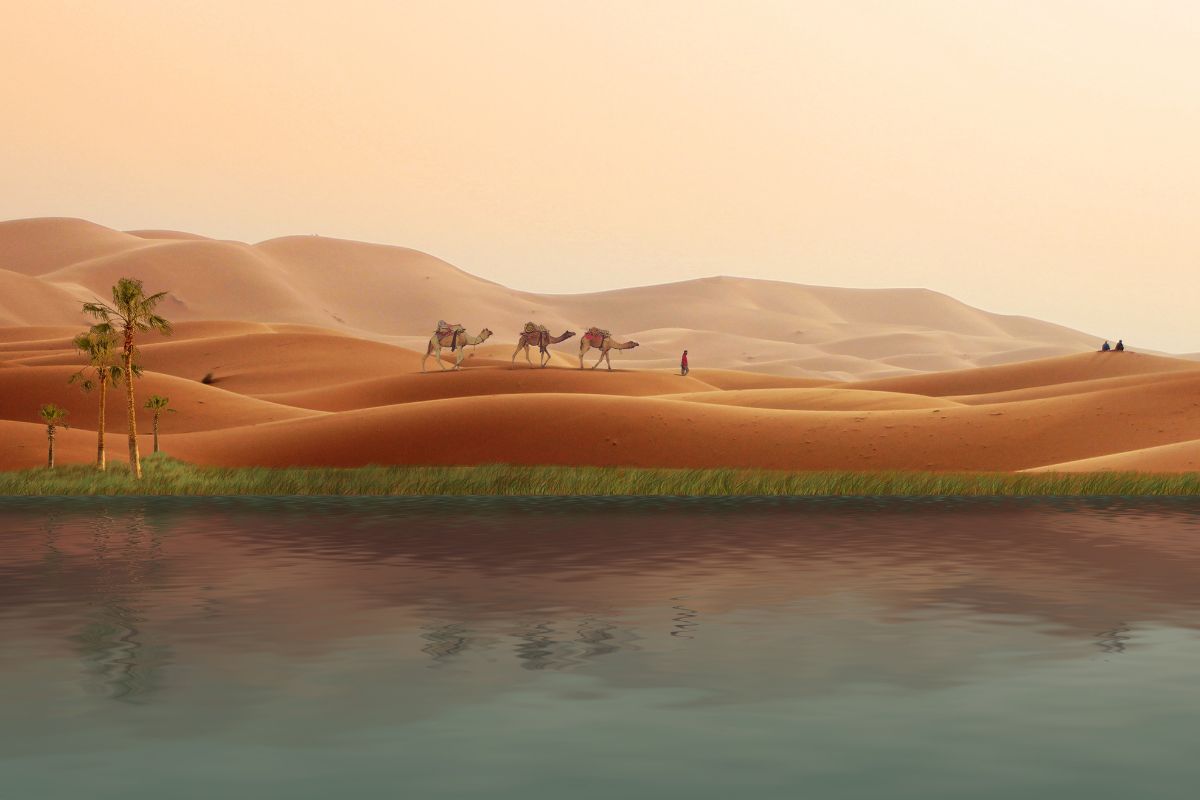
The reasons why moroccan people prefer blue color:
Moroccans have a strong affinity for the color blue, particularly evident in places like Chefchaouen. Several factors contribute to this fondness for blue:
Spiritual Significance: Blue is associated with spirituality and is often linked to the divine in Moroccan culture. The color is believed to represent the heavens, creating a connection with the spiritual realm.
Warding off Evil: There is a cultural belief that the color blue has protective qualities and can ward off evil spirits. Painting doors, windows, and buildings in blue is seen as a way to safeguard against negative energies.
Cooling Effect: In the hot climate of Morocco, especially in cities like Chefchaouen, the use of blue is practical. The cool tones of blue create a visually refreshing and comfortable environment, providing a psychological cooling effect.
Historical Tradition: The tradition of using blue in Moroccan architecture dates back to the 1930s when Jewish refugees settled in Chefchaouen. The tradition has since been maintained, contributing to the city’s distinctive blue appearance.
Cultural Identity: The prevalence of blue in Moroccan cities is a part of the country’s cultural identity. It signifies a unique aesthetic and architectural style that distinguishes Morocco from other places.
In summary, Moroccans’ preference for the color blue is deeply rooted in spirituality, cultural traditions, and practical considerations, making it a significant and cherished aspect of their identity and daily life.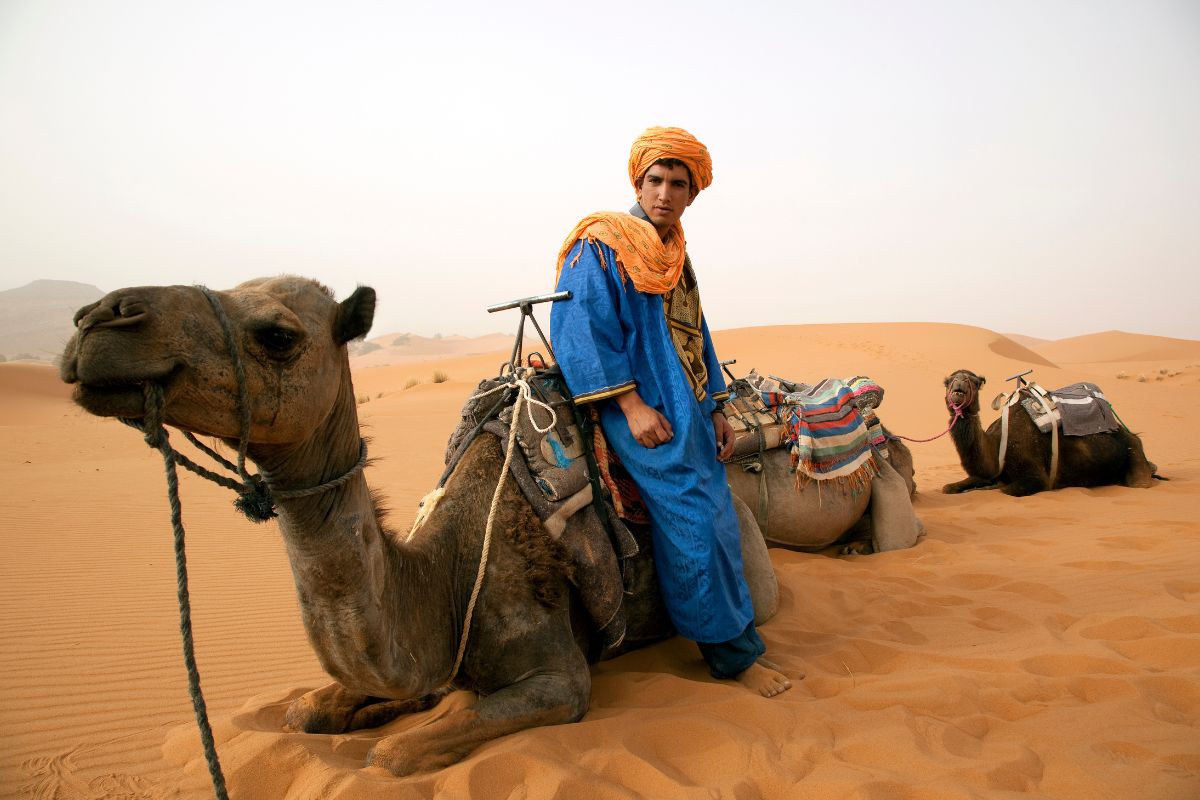
Moroccan mint tea, also known as “Maghrebi mint tea” or “Moroccan whiskey,” is a popular beverage with several potential benefits:
Digestive Aid: Mint tea is often consumed after meals in Morocco. Mint is known for its digestive properties, helping to alleviate indigestion, bloating, and gas.
Refreshing Hydration: The combination of green tea and mint leaves creates a refreshing drink, making it a popular choice for staying hydrated, especially in Morocco’s warm climate.
Rich in Antioxidants: Green tea is loaded with antioxidants, which can help neutralize free radicals in the body and contribute to overall health.
Mood Enhancement: The aroma of mint is believed to have mood-enhancing properties. Drinking mint tea may help relax the body and alleviate stress.
Respiratory Benefits: The menthol in mint leaves can have a soothing effect on the respiratory system, making mint tea a popular choice for individuals with respiratory issues or congestion.
Improved Focus: The combination of green tea’s moderate caffeine content and the invigorating properties of mint can contribute to increased alertness and focus.
Blood Sugar Regulation: Some studies suggest that green tea may play a role in regulating blood sugar levels, potentially benefiting individuals with diabetes.
Antibacterial Properties: Mint has natural antibacterial properties, which may contribute to oral health and hygiene.
Weight Management: Green tea is often associated with metabolism-boosting properties, and when combined with a healthy diet and lifestyle, it may support weight management.
It’s important to note that while mint tea can offer these potential benefits, individual responses may vary, and excessive consumption of mint tea or green tea may have side effects. As with any herbal remedy, it’s advisable to enjoy it in moderation as part of a balanced lifestyle. Additionally, individuals with specific health conditions or concerns should consult with a healthcare professional for personalized advice.
More details about Moroccan Mint Tea.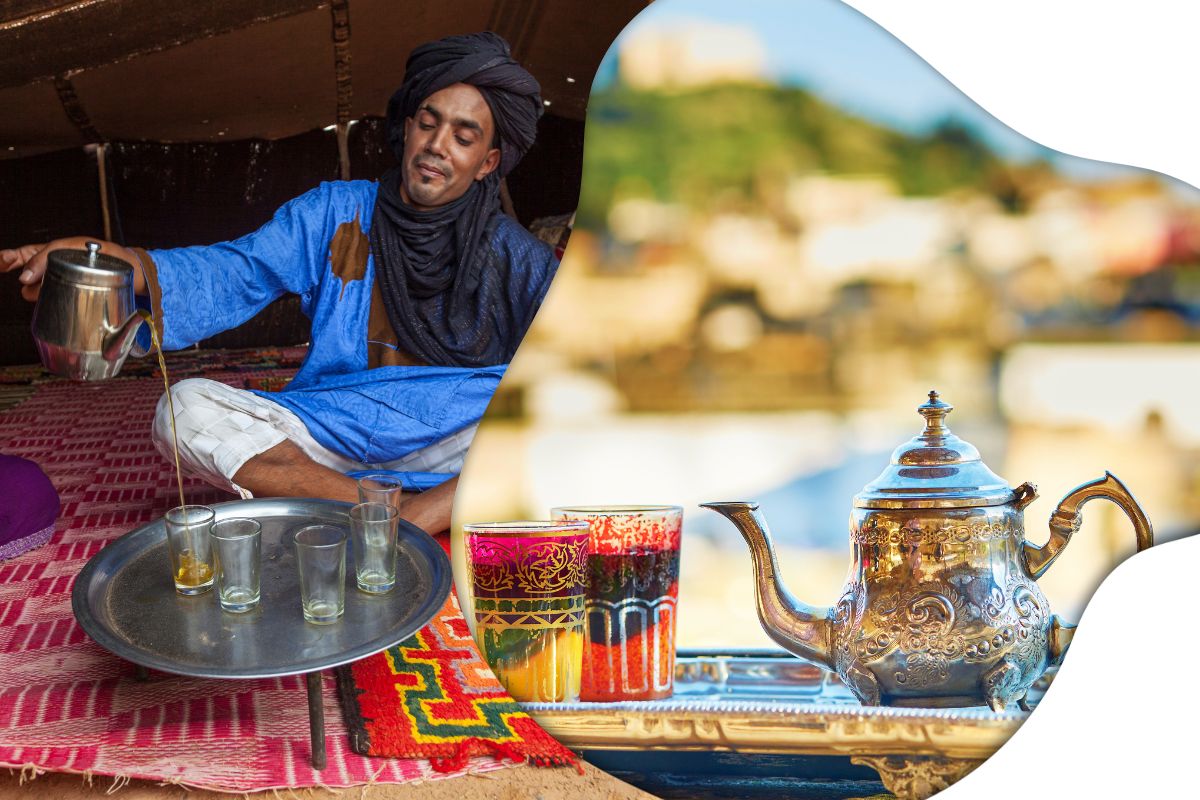
What is the price range of Moroccan Caftan?
Investing in a caftan outfit from Morocco is a truly rewarding choice, considering the craftsmanship and cultural significance embedded in this traditional attire.
The caftan, adorned with intricate patterns and skillful workmanship, reflects the mastery passed down through generations.
Prices for caftans range from $10 to $200, contingent upon the quality of fabric and the intricacy of labor invested. Opting to purchase a caftan directly from Morocco not only proves to be more economical but also allows you to experience authentic craftsmanship.
The country’s rich history and tradition are interwoven into these garments, making them unique and highly desirable.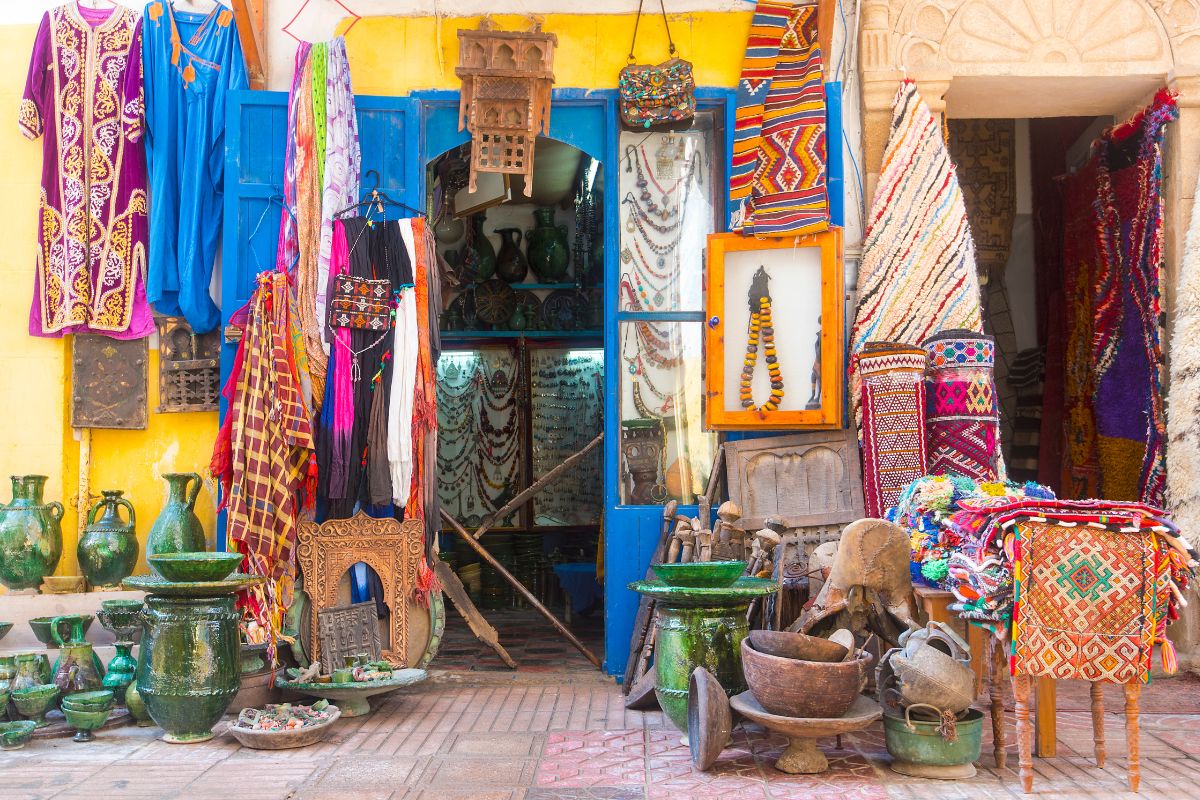
Here are the facts and the best spices worth buying from Morocco:
When in Morocco, exploring the vibrant markets for spices is a must. The quality and flavor of Moroccan spices surpass those found in many North American and European markets. Consider purchasing staples like saffron, turmeric, cumin, and Ras El-hanout, renowned for their rich profiles.
For an extra punch, ask the shopkeeper to grind the spices fresh. Choose spices you’ll use regularly for a more authentic culinary experience. Some favorites include cumin, cinnamon, paprika, and white pepper, known for their intense flavors.
Be wary of tourist-centric shops to avoid overpricing, and wait until the end of your trip for the freshest purchases.
Moroccan almonds, walnuts, figs, dates, olives, and culinary-grade argan oil are also prized finds.
Best Locations to Buy Moroccan Spices:
The best locations to buy these treasures are scattered across Morocco, each offering unique regional specialties.
For instance, Tailouine is renowned for its exclusive saffron production. Prices vary, with Moroccan Spices Explore the markets to fill your senses and elevate your culinary creations with the finest Moroccan spices.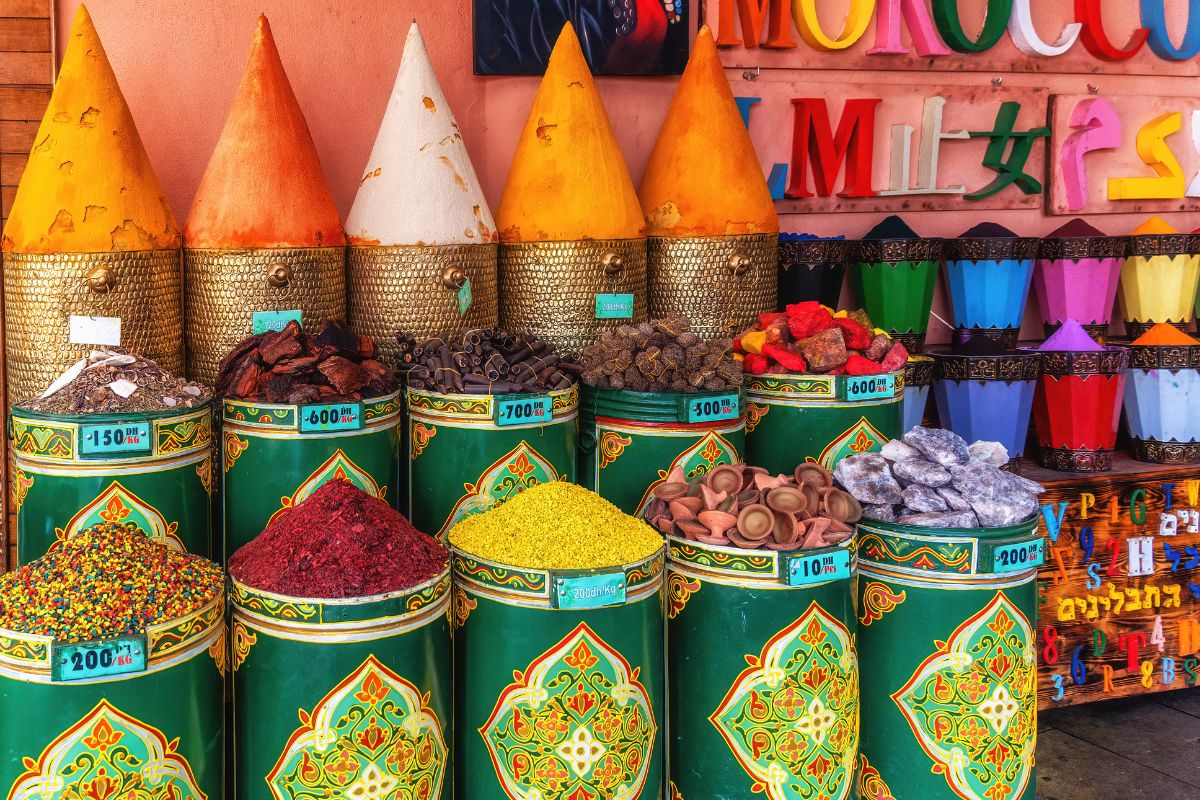
The captivating red hue that graces the buildings and walls of Marrakech is a distinctive feature, primarily attributed to the use of local materials, specifically the abundant red clay and sandstone indigenous to the region. The architectural tradition in Marrakech involves a unique technique, employing a mixture of red clay and chalk for construction, resulting in the characteristic reddish-brown color that defines the cityscape.
The locally sourced red clay, known as “pise” or “tabia,” has served as an indigenous building material in Morocco and North Africa for centuries. Beyond its aesthetic contribution, the clay acts as a natural insulator, regulating temperatures by providing insulation against the intense heat of the desert sun. This dual functionality of enhancing visual appeal and ensuring thermal comfort highlights the practicality of utilizing materials readily available in the area.
Moreover, the historical and cultural significance of using local resources establishes a profound connection between Marrakech’s architecture and the natural environment.
The striking reddish coloration is particularly pronounced in the historic Medina (old town) of Marrakech, where labyrinthine streets and traditional structures create a visually captivating and culturally rich ambiance. Over time, this distinct association of Marrakech with its red architecture has led to the endearing nickname “the Red City,” embodying the unique character and identity woven into the very fabric of its buildings. These facts about the Red City in Morocco unveil a captivating narrative of architectural ingenuity, environmental adaptation, and the cultural tapestry that defines this iconic North African metropolis.
Here are some important facts about Red City in Marrakech Morocco:
Historical Significance: Marrakech is one of Morocco’s four imperial cities, having served as the capital under various dynasties. It was founded in the 11th century by the Almoravid dynasty.
Architectural Charm: The city is renowned for its unique architecture, featuring red walls and buildings made from local red sandstone and clay. This has earned it the nickname “Red City.”
Medina and Souks: The heart of Marrakech is its historic medina (old town) with narrow winding streets, bustling souks (markets), and historic landmarks like the Koutoubia Mosque.
Jemaa el-Fnaa: Marrakech’s main square, Jemaa el-Fnaa, is a vibrant and lively space filled with street performers, food stalls, and traditional markets. It comes alive in the evenings, offering a captivating atmosphere.
Palaces and Gardens: Marrakech boasts several palaces and beautiful gardens. The Bahia Palace and the Saadian Tombs are notable historical sites, while the Majorelle Garden is a stunning botanical garden owned by Yves Saint Laurent.
Koutoubia Mosque: The Koutoubia Mosque is an iconic landmark in Marrakech, featuring a tall minaret and beautiful Islamic architecture. It is one of the largest mosques in the city.
Cultural Heritage: Marrakech has a rich cultural heritage, reflected in its traditional music, dance, and art. Visitors can experience Moroccan cuisine, music performances, and traditional craftsmanship.
Traditional Riads: Many visitors choose to stay in traditional riads, which are traditional Moroccan houses with an interior garden or courtyard. These provide an authentic and intimate experience of Moroccan architecture and lifestyle.
Festivals and Events: Marrakech hosts various festivals and events throughout the year, celebrating music, film, and the arts. The Marrakech International Film Festival is particularly well-known.
Gateway to the Atlas Mountains: Marrakech serves as a gateway to the stunning Atlas Mountains, offering opportunities for trekking, hiking, and exploring Berber villages.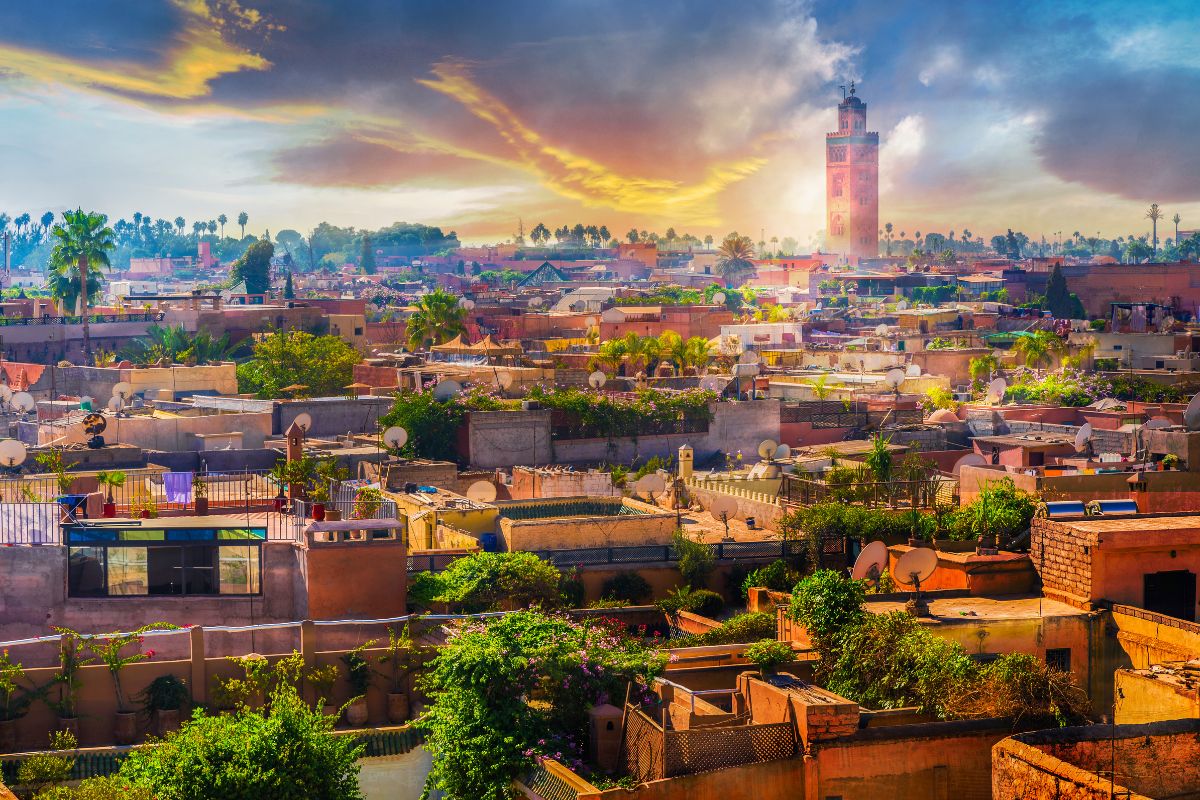
Morocco, a country blending ancient charm with modern allure, is a treasure trove of intriguing fun facts. Nestled in its colorful medinas, Safi crafts vibrant blue pottery, while Essaouira boasts aromatic thuya woodcraft. The University of Al Quaraouiyine in Fes stands as the world’s oldest continuously operating university since 859 AD. Berber culture weaves through Morocco’s tapestry, celebrated in festivals and traditional dress variations. Aït Benhaddou, a UNESCO site, is a cinematic marvel, and Erfoud’s fossil-rich terrain draws enthusiasts. The Rose Festival in Kelaat M’Gouna celebrates Morocco’s rose production, while Gnawa music pulses through lively ceremonies. Skoura’s oasis offers a lush escape, and argan oil from native trees enriches culinary and cosmetic experiences. Explore Morocco’s rich heritage, where every corner reveals a delightful surprise.
Here are some details about the fun facts about Morocco
Blue Pottery of Safi: Safi, a city in Morocco, is renowned for its distinctive blue pottery. The vibrant blue and white designs on ceramics are a traditional craft and make for unique souvenirs.
World’s Oldest University: The University of Al Quaraouiyine in Fes, founded in 859 AD, is recognized by UNESCO and the Guinness World Records as the world’s oldest continuously operating educational institution.
Thuya Woodcraft: The town of Essaouira is famous for its thuya woodcraft. Artisans create intricate and beautiful items, such as boxes and furniture, from the aromatic wood of the thuya tree.
Berber Culture: Morocco has a significant Berber population, and Berber culture is an integral part of the country’s heritage. The Berbers are known for their distinctive traditions, language, and vibrant festivals.
Aït Benhaddou: This UNESCO World Heritage site is a fortified city along the former caravan route between the Sahara and Marrakech. It has served as a backdrop for various films, including “Lawrence of Arabia” and “Game of Thrones.”
Traditional Dress: The traditional dress in Morocco varies by region. Djellabas and kaftans are commonly worn, and the style and color often signify the wearer’s social and economic status.
Essence of Roses: Morocco is a significant producer of rose products. The town of Kelaat M’Gouna hosts an annual Rose Festival, celebrating the harvest of Damascus roses used in making rose water and essential oils.
Fossil Discoveries: Morocco is home to the fossil-rich region of Erfoud, where numerous fossils, including trilobites and ammonites, can be found. The region has become a popular destination for fossil enthusiasts.
Green Oasis of Skoura: Skoura, located in the Dades Valley, is known for its lush green oasis filled with palm groves and historic kasbahs. The serene environment offers a stark contrast to the nearby arid landscapes.
Gnawa Music: Gnawa music is a traditional Moroccan genre with roots in sub-Saharan Africa. It combines spiritual lyrics with rhythmic beats and is often performed during colorful ceremonies and festivals.
Argan Oil Production: The argan tree, native to Morocco, produces argan oil, known for its culinary and cosmetic uses. The traditional method of extracting the oil involves grinding the nuts by hand.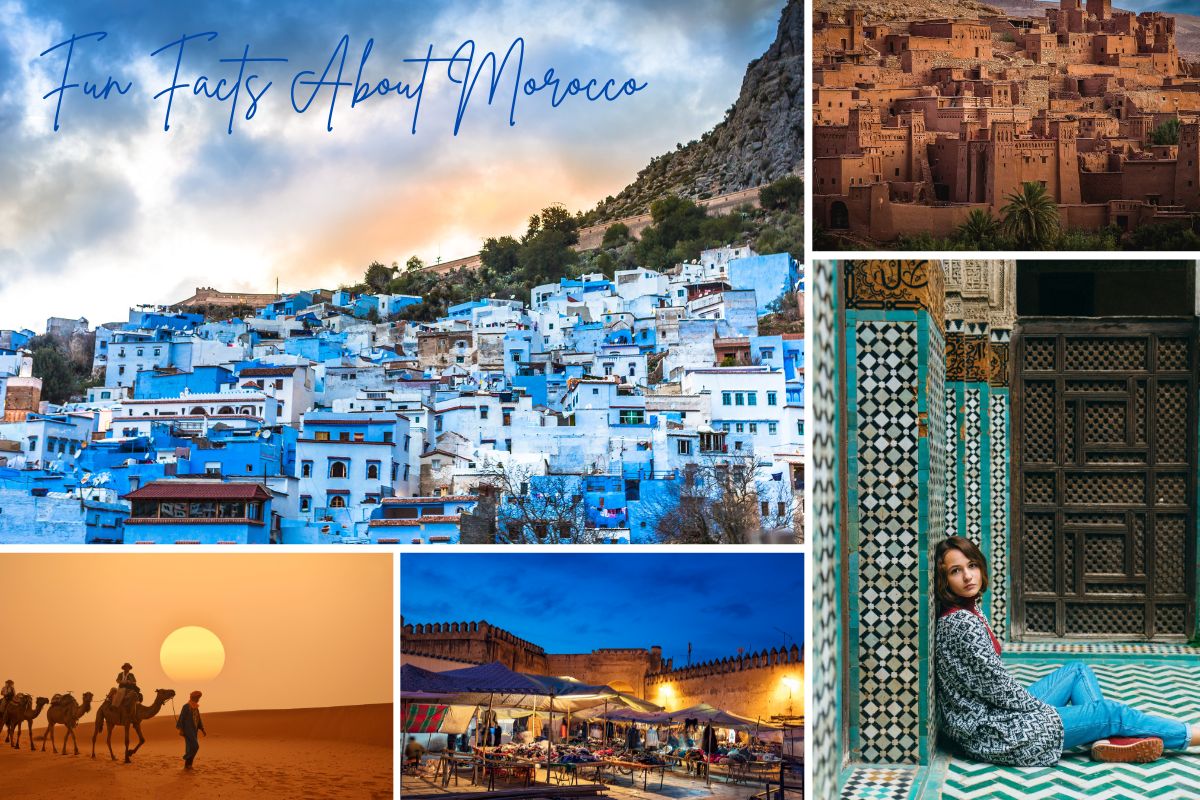
Embark on a cultural odyssey through Morocco, where the blend of Arab, Berber, and French influences forms a captivating tapestry. Explore the diversity in traditional attire, from the ubiquitous djellaba to intricately designed kaftans. Language unfolds as a mosaic, with Arabic, French, and Berber weaving linguistic diversity. Islamic influences resonate in stunning mosques, exemplified by the iconic Hassan II Mosque.
Indulge in the Moroccan tradition of mint tea, a symbol of hospitality and friendliness. Traverse vibrant souks, bustling with spices, textiles, and crafts. Marvel at historical architecture, from medieval medinas to intricately designed palaces. Immerse in traditional music and dance, savor culinary delights, and celebrate festivals that unveil the cultural richness.
Morocco, a land of tolerance and coexistence, embraces diversity, making each facet a brushstroke in its artistic heritage. There are some important information about Morocco Culture Facts you might need to know before you make your Morocco holidays or visit plans.
Cultural Fusion: Morocco boasts a rich blend of Arab, Berber, and French influences, creating a diverse and unique cultural tapestry.
Traditional Attire: The djellaba, a hooded robe, is a common traditional garment. Women may wear kaftans, often intricately designed, especially during special occasions.
Language Diversity: Arabic is the official language, but French is widely spoken. Berber languages persist in rural areas, reflecting Morocco’s linguistic diversity.
Islamic Influence: Islam shapes Moroccan life. Mosques, like the iconic Hassan II Mosque, showcase stunning architecture. Respect local customs, particularly during Ramadan.
Mint Tea Tradition: Moroccan hospitality often involves serving mint tea, a symbol of friendliness. Accepting tea is a gesture of politeness and fosters social connections.
Souk Culture: Vibrant markets or souks are integral to Moroccan life. These bustling hubs offer everything from spices and textiles to traditional crafts.
Historical Architecture: Morocco is dotted with architectural marvels like the medieval medinas and intricately designed palaces, showcasing Islamic and Moorish influences.
Music and Dance: Traditional Moroccan music, including the mesmerizing sounds of Andalusian music, is complemented by lively folk dances, such as the Ahidous.
Festivals and Celebrations: Festivals like Eid al-Fitr and the Festival of Roses are celebrated with fervor. These events provide a glimpse into the cultural and religious diversity.
Culinary Delights: Moroccan cuisine is a delight, featuring tagines, couscous, and flavorful spices. Meals are often communal, emphasizing social bonds.
Tolerance and Coexistence: Morocco embraces religious and ethnic diversity, fostering tolerance. Historic Jewish quarters, like those in Marrakech, highlight this coexistence.
Artistic Heritage: Traditional crafts, including pottery, carpets, and intricate tile work, contribute to Morocco’s artistic legacy. Artisans continue ancient techniques passed down through generations.
Understanding these cultural facets enhances the appreciation of Morocco’s history, traditions, and the warmth of its people.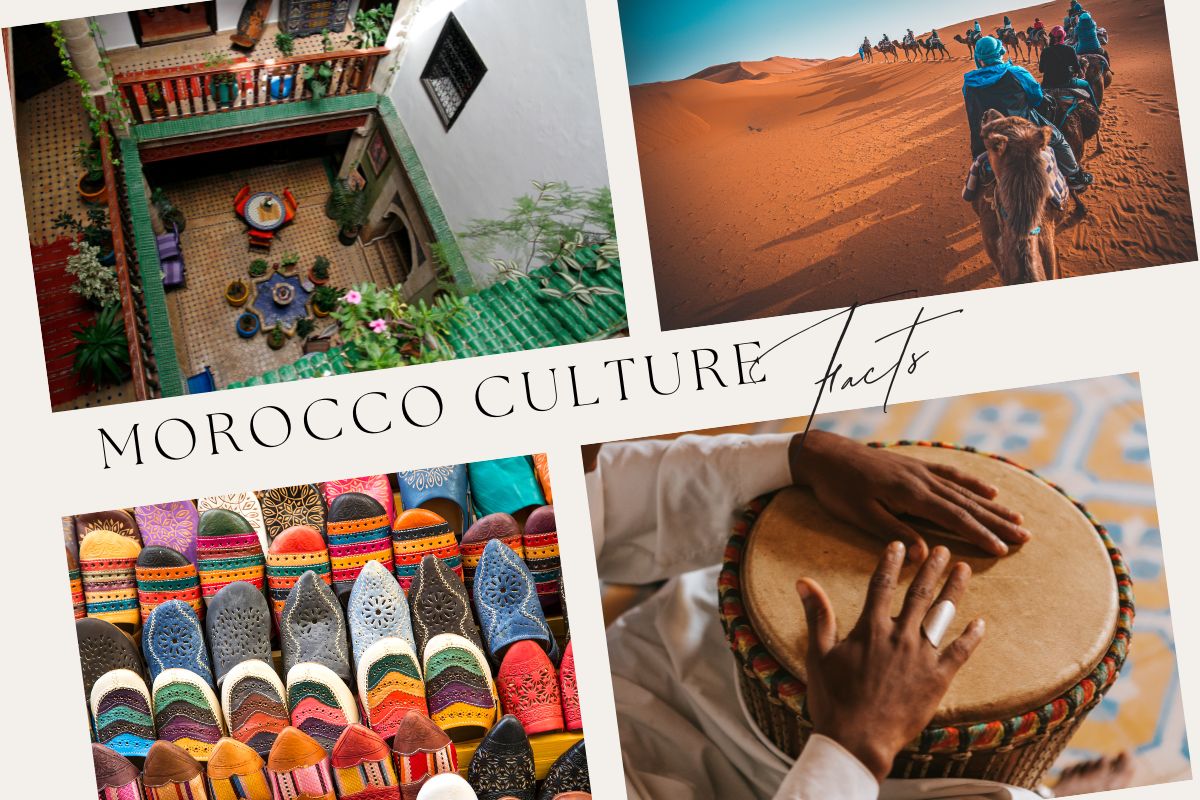

Apart from FAQs and facts about Morocco
Quick Tips Before Visiting Morocco as a Tourist
Cultural awareness facts of Morocco: Familiarize yourself with Moroccan customs and traditions. Dress modestly, especially in rural areas, and respect local norms.
Language Basics: Learn a few Arabic or French phrases. While many Moroccans speak French, English is less common outside tourist areas.
Currency Exchange: Carry Moroccan Dirhams for smoother transactions. Credit cards are widely accepted, but it’s prudent to have cash for smaller establishments.
Health Precautions: Check if vaccinations are required and carry any necessary medications. Hydrate well and avoid tap water; opt for bottled or treated water.
Seasonal Considerations: Morocco experiences diverse climates. Pack accordingly, considering coastal areas, mountainous regions, and the Sahara.
Transportation Plans: Arrange transportation from the airport to your accommodation, especially if arriving late. Familiarize yourself with local transport options.
Accommodation Booking: Reserve accommodations in advance, especially during peak seasons. Riads (traditional houses) offer an authentic stay.
Local Etiquette: Greet with “Salam” and accept tea graciously. Bargain respectfully in markets and be cautious of scams.
Appropriate Attire: Dress comfortably and modestly. In mosques, women should cover their hair, and all visitors should remove shoes.
Emergency Contacts: Save local emergency numbers and the contact information of your country’s embassy or consulate.
By preparing in advance, you’ll enhance your Morocco Tour experience and ensure a memorable and enjoyable stay in Morocco.
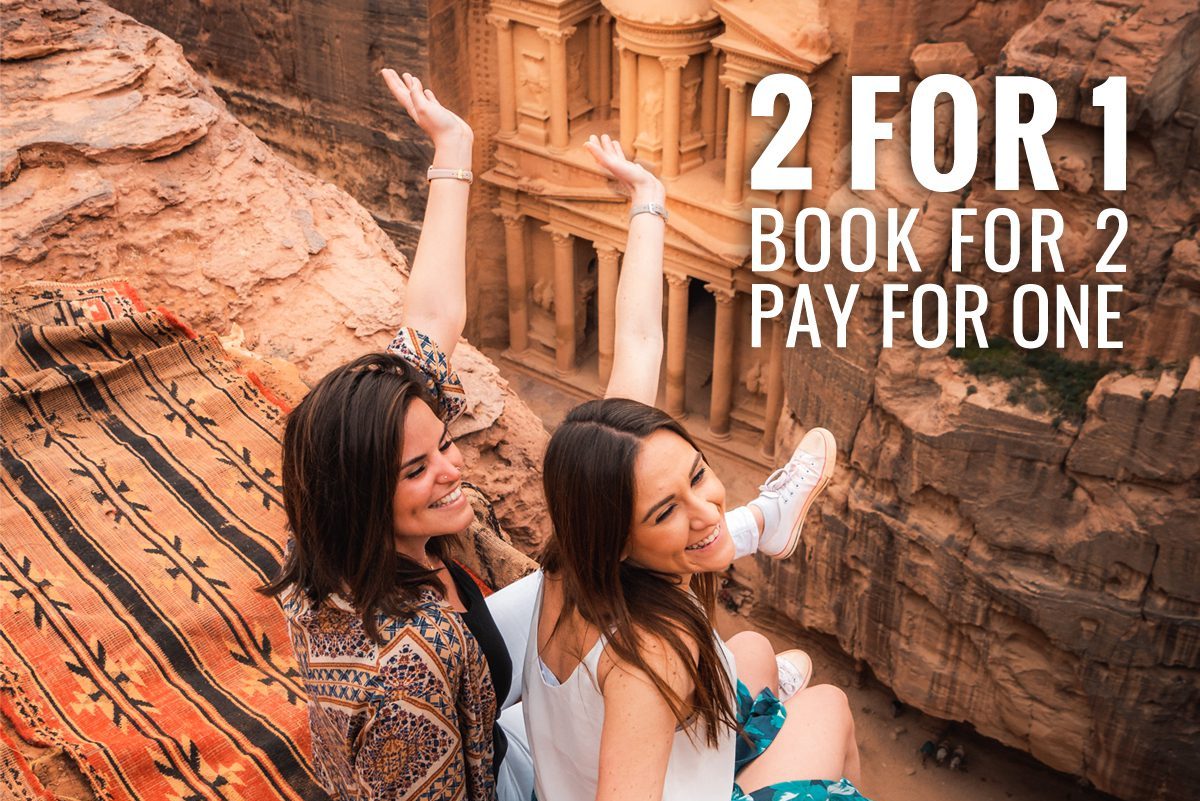 Spring Sale: 2 FOR 1
Spring Sale: 2 FOR 1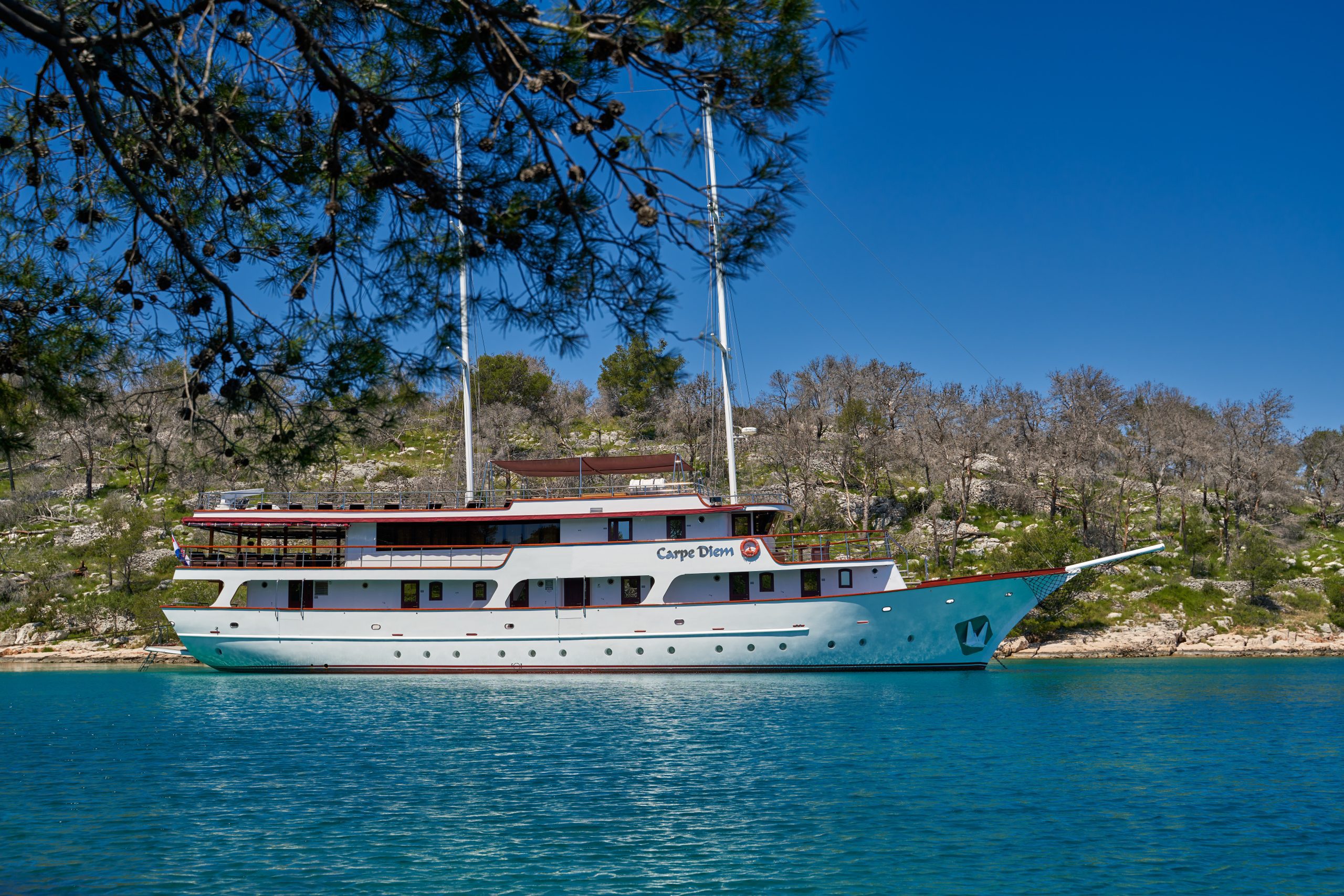 Croatia Sailing 2024: 2 For 1
Croatia Sailing 2024: 2 For 1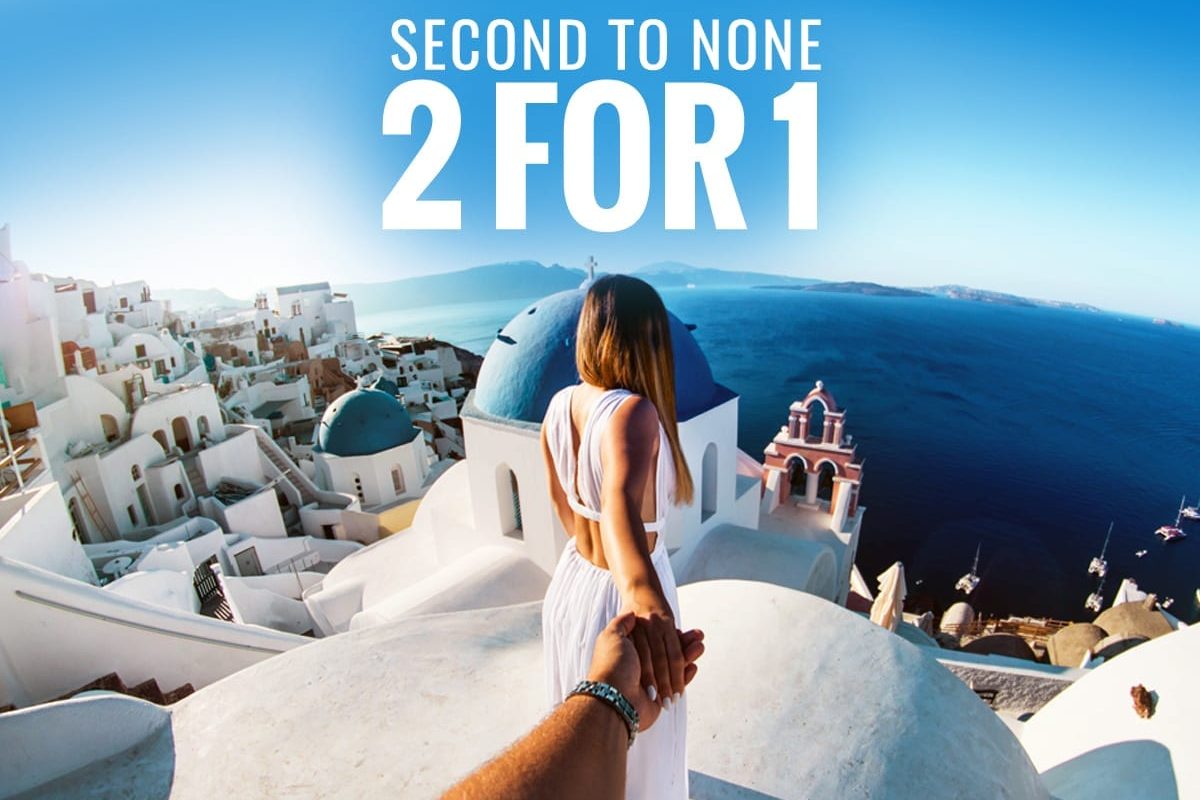 Greece Trips : 2 For 1
Greece Trips : 2 For 1 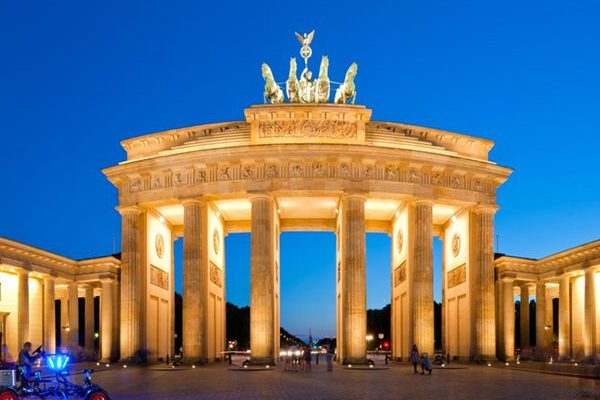 Central & Eastern Europe Tours: 2 For 1
Central & Eastern Europe Tours: 2 For 1 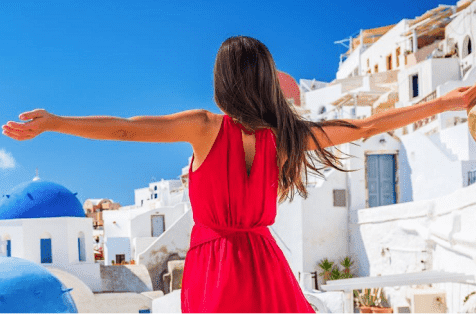 Why Travel Talk
Why Travel Talk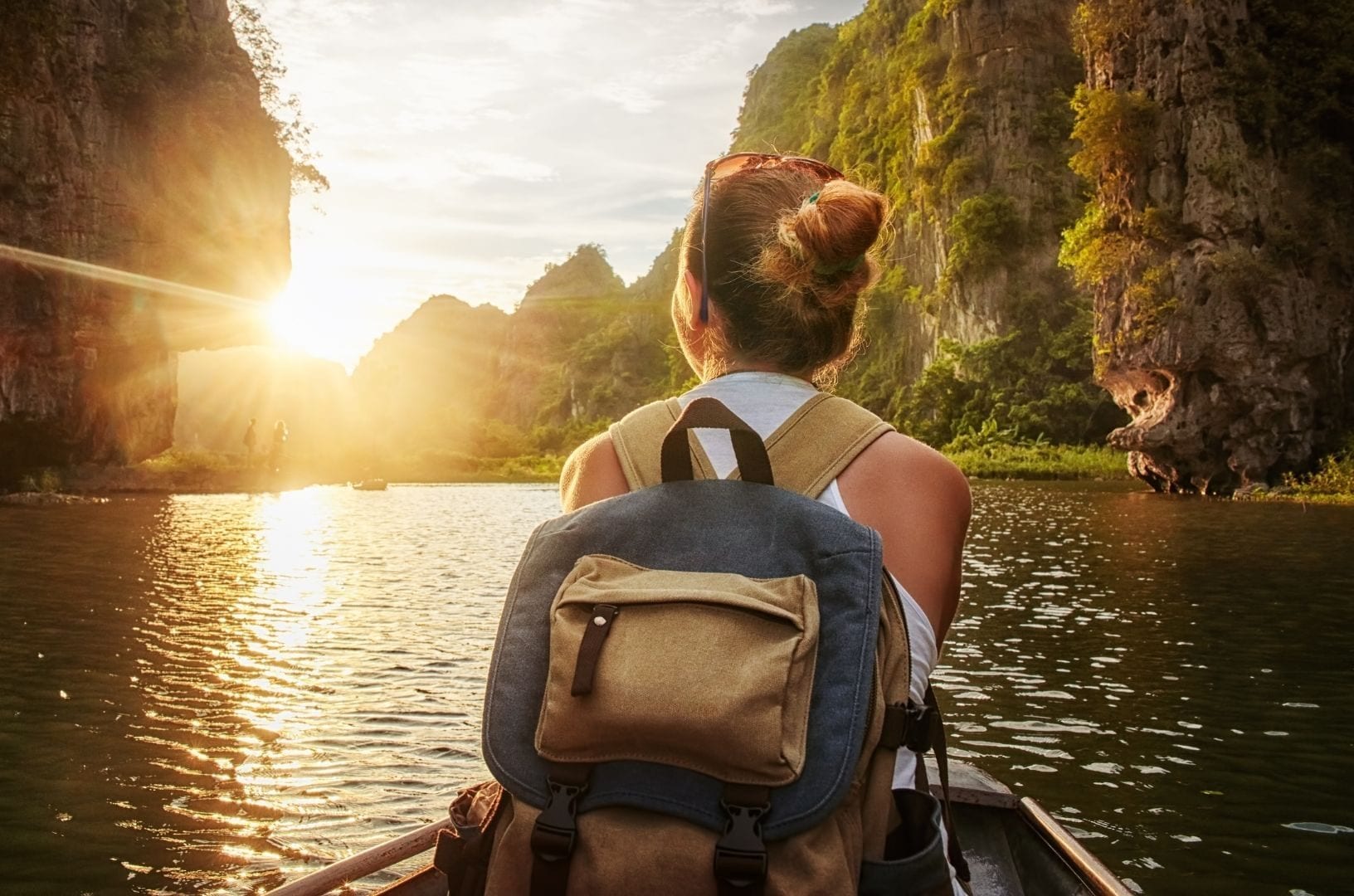 Safe Travels with Travel Talk
Safe Travels with Travel Talk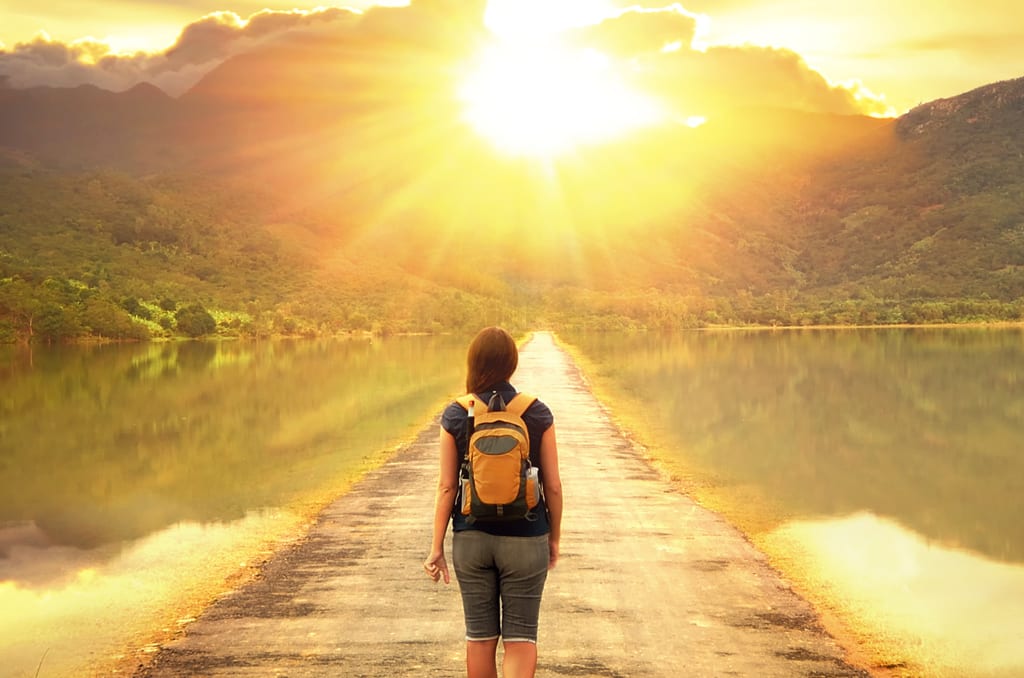 Fair Travels with Travel Talk
Fair Travels with Travel Talk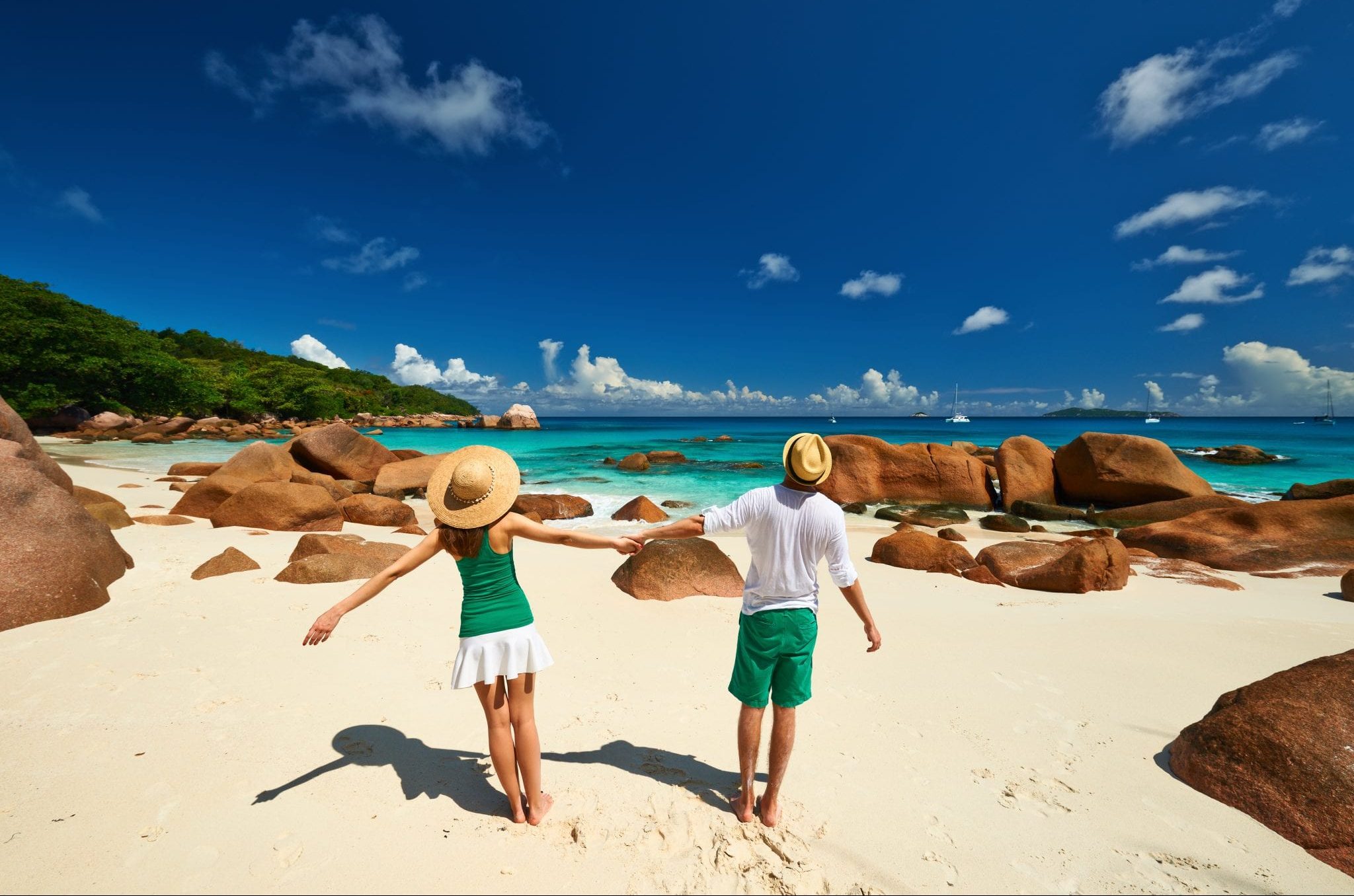 Travel Talk Blog
Travel Talk Blog